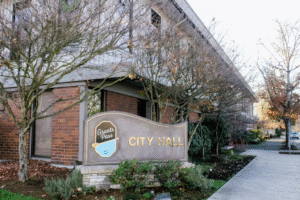If you missed Part I of this serious please check it out: Oregon versus Idaho: Homelessness and Drug Addiction (Part I) – A Voice Within
In part II – How does Oregon compare to Idaho for money allocated to homelessness and drug addiction?
Oregon and Idaho, despite being neighboring states, allocate vastly different resources to address homelessness and drug addiction.
Oregon: Significant Investment Amid Ongoing Challenges
Oregon has committed substantial funding to combat homelessness and substance use disorders:
- Homelessness and Housing: Governor Tina Kotek’s 2025–2027 budget proposes over $700 million to maintain shelters, transition individuals into housing, and expand affordable housing infrastructure.
- Behavioral Health and Addiction Services: The state allocated nearly $1 billion in 2023 for substance use disorder services, encompassing treatment programs, prevention education, and peer-delivered services. However, an analysis indicates that over $6 billion annually would be required to meet the full demand for addiction services statewide.
- Local Efforts: Multnomah County, home to Portland, approved a $3.96 billion budget for 2024–2025, dedicating $285 million to homeless services and $29 million to substance abuse treatment and harm reduction programs.
Despite these investments, Oregon continues to face high rates of homelessness and drug addiction, suggesting that funding alone may not suffice to resolve these complex issues.
Idaho: Lower Spending with Different Outcomes
In contrast, Idaho allocates significantly less to these areas:
- Homelessness: Idaho’s homelessness rate remains among the lowest in the nation. The state employs a more decentralized approach, with local communities and non-profit organizations playing pivotal roles in providing services.
- Substance Use Treatment: Idaho’s spending on behavioral health and addiction services is considerably lower than Oregon’s. The state emphasizes prevention and community-based interventions, with a focus on integrating services within existing healthcare frameworks.
Idaho’s outcomes suggest that factors beyond funding levels, such as policy approaches, community engagement, and service delivery models, significantly influence the effectiveness of homelessness and addiction interventions.
The stark differences between Oregon and Idaho in addressing homelessness and drug addiction underscore the complexity of these issues. While Oregon invests heavily in state-led programs, Idaho’s community-based strategies yield comparatively better outcomes. This contrast highlights the importance of not only funding but also the effectiveness of policy implementation and community involvement in tackling such pervasive social challenges.
Perhaps Oregon should learn from Idaho, a state that has far greater success in dealing with these two critical issues, homelessness and drug addiction. At the very least Oregon needs to change polices at the state level which is resulting in enabling drug addiction and homeless issue. It is time to revisit these policies.
Comparative Overview
| Aspect | Oregon | Idaho |
|---|---|---|
| Homelessness Rate | High | Low |
| Drug Addiction Rate | High | Low |
| State Spending | Billions allocated to housing and treatment | Significantly lower |
| Policy Approach | Centralized state-led initiatives | Decentralized, community-focused |
| Outcomes | Persistent challenges despite high spending | Better outcomes with lower expenditure |





